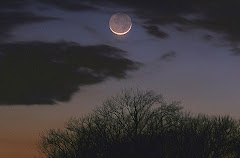According to loyal supporters of
David Jubb, raw food is out and "Life" food is IN. Jubb is a pioneer nutritionist, author, lecturer and shaman, who was a leading figure at this year’s
Raw Life Festival at Angsbacka Course Center. According to one follower, Jubb once inspired the founders of the
Landmark Education phenomenon, and his teacher,
Cloud TwoChildren, remains his own top inspiration.
PLAY AWAKENS THE MIND
With a PhD and a list of other scientific
credentials to his name, Jubb’s 40 years of experience have honed his remarkable abilities to read the body "like a book"; integrating indigenous wisdom and scientific methods along the way.
He started out using a series of games to read body language and he believes that such games are the best ways to tap a person’s highest potential. “Playfulness is a suspension of ordinary time. It reveals a state of mind and a state of being.”
To Jubb games were a way of exploring the “universe inside our mind,” which also became the name of his controversial TV show on Manhattan cable. His show explores subjects such as how the human “gut” has its own intelligence and the damaging effect of growth hormones. But Jubb is more than an entertainer and educator.
In earlier years, Jubb designed simple machines and techniques to help determine direction, focus and balance in people as a way of discerning how they approach life’s challenges.
“Every single thing which one does is a metaphor of the clearest of things happening in the unconscious mind.
He believes that sweat lodges, prayer circles, and similar ceremonies are places where people go to deliberately create darkness—which may start as a seeming situation of suffering, but ultimately these sacred spaces teach people how to think without interference.
LIFE COLLOID: A Soil Based Supervitalizer?
Jubb enthusiastically shared his discovery of “Life Colloid”—a supervitalizer mineral-organo complex, “It’s what is missing in the world. It can preserve you,” he says.
According to Jubb, the Life Colloid substance is found only in the earth’s oldest forests, “it’s the most ancient stuff and it carries every phytonutrient in the forest.” Life Colloid's rare availability only meant that Jubb had to spend hours studying satellite images to find a suitable enough deposit source in Australia.
Jubb’s research suggests that the intestinal tract carries 1,000 species of “good” bacteria, but it should carry around 80,000 species. And Life Colloid is meant to help with restoring these organisms to improve digestion and food absorbtion.
The Life Colloid provides a number of other benefits including increased immunity and glutathianperoxidase production, but the most interesting are the claims that it “snacks on contaminants,” in the body, and Jubb says that it supports DNA generation.
“People who try it feel something of themselves coming back more,” Jubb claims. “When you have it, you gain the intelligence of a wolf,” Jubb continues, suggesting that a significant increase in perception and awareness returns to those who ingest Life Colloid.
GREENS VS. FRUITS
Jubb believes that Irish Moss is the best green superfood substitute available, but he cautions against the intake of too much in the way of green juices because of the alarmingly high amount of phospherous in these so-called superfoods. “A small amount of greens is fine, but it shouldn’t be relied on too heavily,” Jubb reasons. The high phospherous-calcium ratio in Spirulina, for example, creates bone deposits, fail to support the production of serotonin, and impact our sensitivity to bright light, according to Jubb.
Believing that humans are meant to be more “frugivorous,” Jubb encourages consumption of foods that come either from the body of a flower or the flower itself.
He also called on the raw food community to more actively promote the principal of life force in food, and use restraint with respect to certain foods like bananas, which are susceptible to “mould, fungus, and yeast.”
SCIENCE RIPE FOR REFORM
Jubb believes that the scientific establishment needs to be more environmentally focused and that there needs to be greater government disclosure about technologies that support clean energy, “the hand needs to be the people,” he says.
Limited by a collective agreement, science would benefit by shifting from shortsighted and unsustainable economic demands to a rational, logical process that it was designed to be, Jubb reasons. Moreover Jubb argues that the research world’s carrot and stick driven model of observation needs to instead be driven by the internal generation of intrinsic interests like learning, achievement, recognition and growth.
Jubb subscribes to 50,000 year old “Toltec” technologies from the Lemurian era, which he believes are the most naturally powerful teachings available. By putting nature first, Jubb finds that technology can naturalize humanity, “These are principals that are tried and tested from time immemorial.”
Finally, Jubb’s gentle nature and generous time availability struck me as a model of how healers can put forward their crafts as a service first.
In spite of 40 years of dedication and his global celebrity, every night Jubb spent at least a couple of hours offering a specialized sauna massage treatment to guests and providing diet consultations during the day, without the expectation of pay. Thank you, David.
For more information, visit,
http://www.jubbslongevityeurope.com/

































